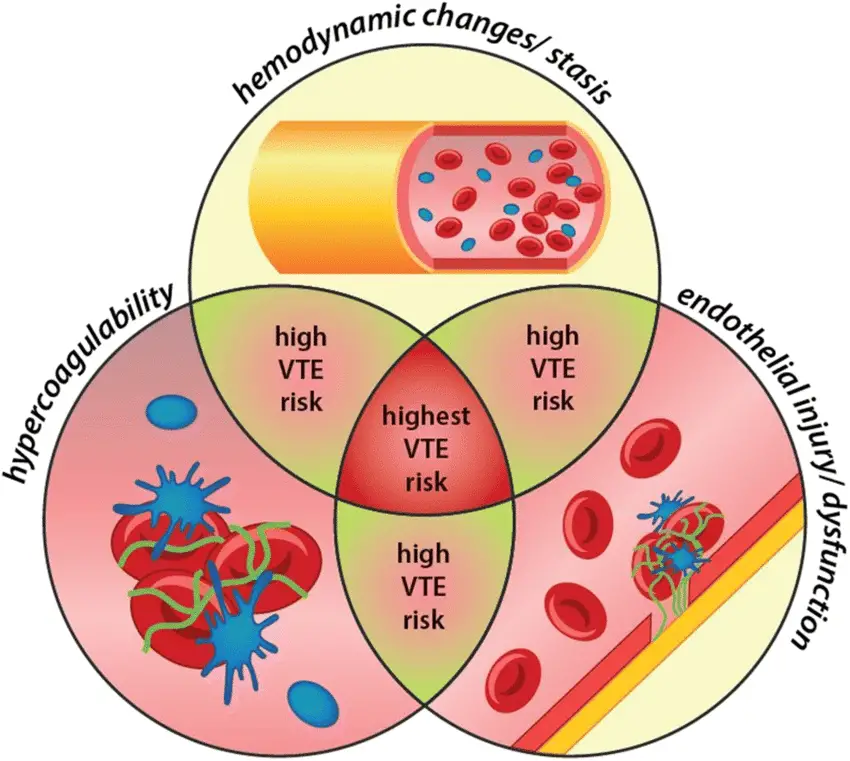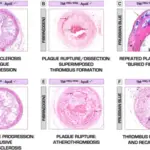
Virchow’s Triad. Virchow’s triad describes the three broad categories of factors contributing to the risk of venous thrombosis: hemodynamic changes, endothelial injury, and hypercoagulability. VTE, venous thromboembolism. Impact of drugs on venous thromboembolism risk in surgical patients - Scientific Figure on ResearchGate. Available from: https://www.researchgate.net/figure/Virchows-triad-describes-the-three-broad-categories-of-factors-contributing-to-the-risk_fig1_330883723 [accessed 8 Mar, 2022]. Not Altered. CC.
Virchow’s triad describes the three broad categories of factors in the development of venous thrombosis. It is put forward by Rudolf Virchow.
Virchow’s triad summarizes the three major risk factors for thrombosis which includes:
- Hypercoagulable state
- Disruption in blood flow
- Endothelial cell damage



